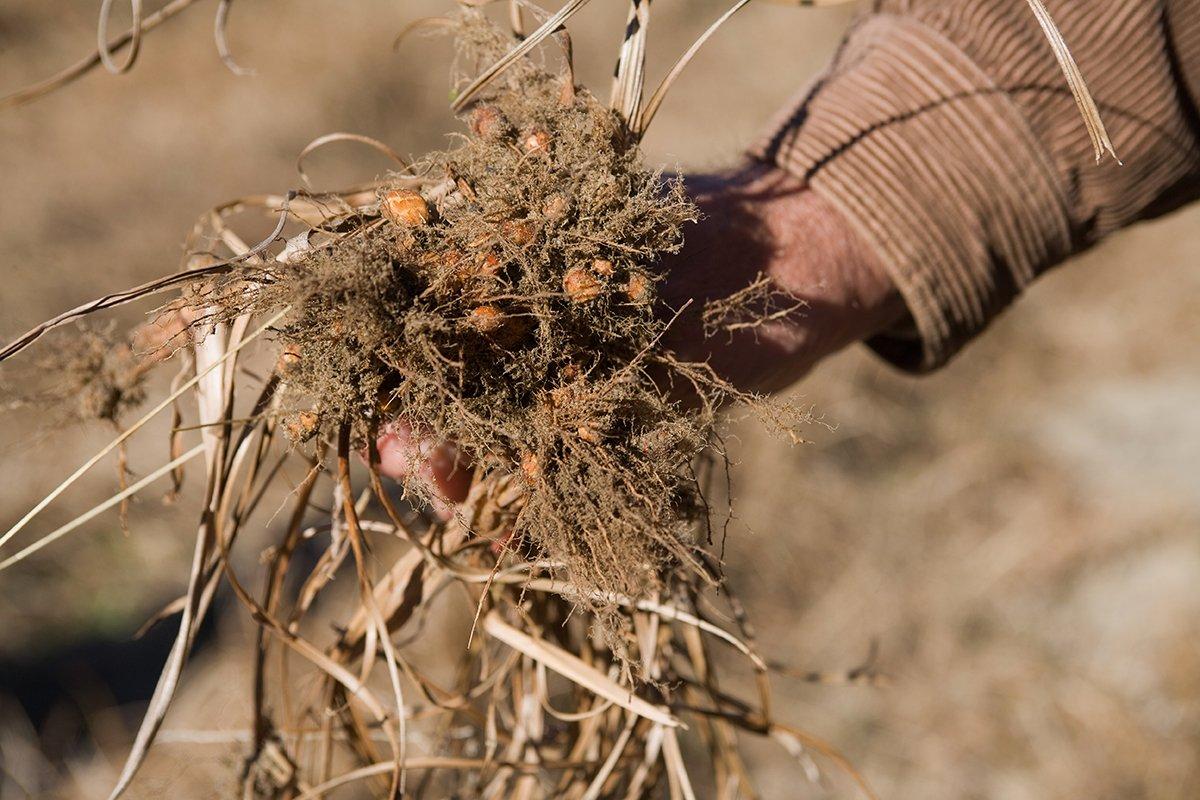What Is Your Preferred Seed for Wildlife?
Chufa is a warm-season perineal sedge that is high in health value — both for humans and turkeys. It has 30 percent fiber, 10 percent protein and 15 percent carbohydrates. It even has high levels of vitamins A and B.
While numerous wildlife species benefit from it, this is a delicacy for wild turkeys. It isn't the plants they like, but the small tubers the plants produce under the ground. Once mature, turkeys will dig up the tubers and eat them. And once they find them, they keep coming back. Clover aside, chufa is arguably one of the most effective food plot options for turkeys and turkey hunters.
How to Plant
This plant species needs a weed-free environment. Because of this, start by working the ground and preparing a good seed bed. Adequately disking the soil should be enough, but to really work the soil, plow the ground and then run a disc over it afterward. If weeds become present, spraying must become a quick priority, as chufa does not compete well with most weeds.
Gear Review: Yamaha Introduces 2018 Kodiak 450 in Realtree
Take soil samples and determine exactly what it needs to create the right soil conditions for optimum growth. The pH of the soil needs to be somewhere between 6 and 7. If necessary, apply lime. In the event that you don't take a soil sample, apply approximately 300 pounds of nitrogen per acre or 13-13-13 fertilizer.
When it comes to the actual planting, there are several ways to do so. You can either spread with a broadcaster and disk it in, drill it in with a no-till drill, plant it with a row planter, or use any other method that provides good seed-to-soil contact. When drilled, plant at a rate of 40 to 45 pounds per acre. When broadcasting, increase the rate to 50 to 55 pounds per acre. This will ensure good coverage and maximum germination.
When to Plant
After the seed is planted, allow for about 100 to 120 days for the plant to reach maturity. Because of this, most people plant chufa during the warmer months. Essentially, soil temperatures need to remain above 65 degrees in order to germinate and grow properly. In the Deep South, plant anywhere from the beginning of April into the beginning of June. Along the middle latitudes of the country, plant from early May until the end of June. In the northern states, wait until late May or June to plant. In most cases, with adequate rainfall, you can plant chufa on into late July, specific seed, rain and temperature depending.
Once the plant matures, turkeys will feed on it throughout late fall, winter and into early spring. This makes it a great food source for holding turkeys during the early part of the spring season.
Where to Plant
The chufa plant can be tricky to grow. However, in most cases, you can plant chufa anywhere corn will adequately grow. That said, it prefers sandy soil — making the Deep South a prime location to grow it. It germinates best in the southern stretches of South Carolina, Georgia, Alabama and other southern states.
Some have had success planting chufa further north, though. That said, it doesn't seem to be quite as productive, and most turkey hunters oftentimes choose clover as their primary food plot option for turkeys in the North.
Don't Miss: 6 Food Plots on a Budget
Are you a hunter wanting to learn how to accomplish your goals? Check out our stories, videos and hard-hitting how-to's on food plots and land management.








